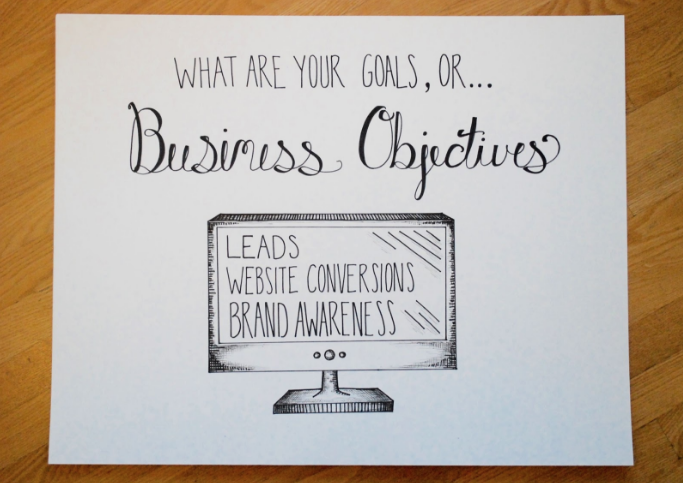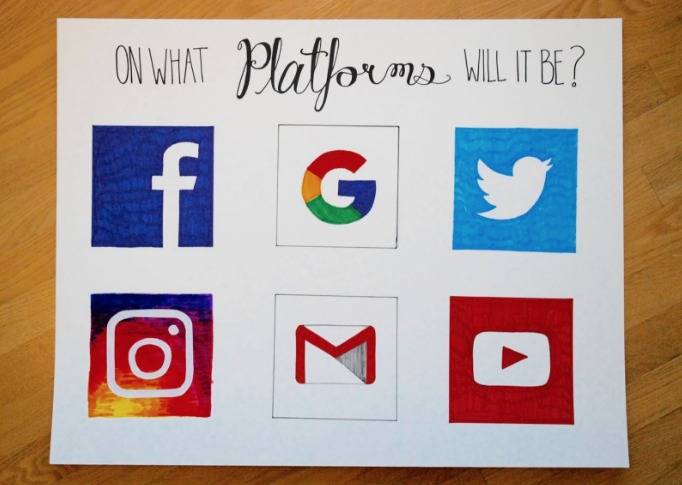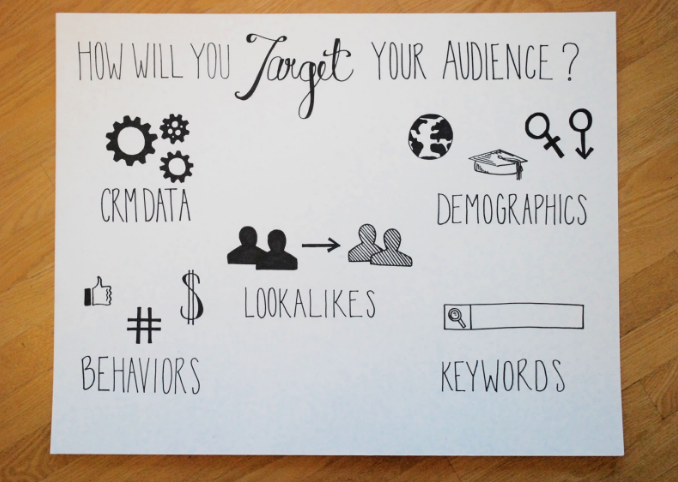
Get your FREE 30-day trial.
Please complete all fields.
Digital Advertising has come a long way--today it's the go-to advertising solution for many major brands. However, if you're new to the industry, there are lots of terms and considerations that you should know before getting started. To help, we've created (or doodled) the top universal items of an ad. Check them out!

The five major components of a digital ad that we will be discussing today are:
Think about them in that order--if you don't know what your goals are, it's really difficult to decide anything else. If you don't know your audience, don't try to select your creative!

The first thing to ask yourself when creating an ad campaign is "What is my goal?" A goal, or business objective, is the result/outcome you hope to reach as a result of an ad campaign. Objectives can include: offline sales (or other brand awareness), online sales (or other website conversions), leads, or mobile app installs.
For example, a financial services brand may run a mobile app install campaign with the goal of reaching more app installs for their new mobile banking app. A retail company may run a lookalike campaign to gain new customers through Facebook ads that look (and hopefully spend) like their current high-value customers. Whatever your goal may be, it is important to know what you want out of a campaign before moving on to any other decisions.

Next, you will need to decide where your ads will appear. Above are some of the top platforms where digital ads can be featured (not doodled are others, especially across the entire display advertising ecosystem). Important to note: This decision is reliant on the results you are wanting to achieve. For example, to reach customers at the moment of purchase intent you might look to Google. To reach customers based on exactly who they are, try Facebook or Instagram. To reach people based on what they're talking about right now, Twitter is a great fit.

You know the reasons you're advertising and where you're placing your ads, but who is it you're trying to reach? Deciding on your audience is an important step. Today, consumers expect a much greater level of personalization. Traditional cookie-based targeting is no longer enough to reach your customers. The beauty of digital advertising is pinpoint targeting, allowing you to use customer data to reach the right audience for the right purpose. The platform you choose to advertise on also affects the targeting capabilities. On Facebook, demographic targeting, lookalikes, and behaviors are all possible methods. On Google, keywords are a possible option.

If only ad campaigns were free! Unfortunately, that's not the case. As a result, another essential step in creating a digital ad campaign is setting your budget and action. In order to calculate your spending, you must first set a budget, or how much you are going to spend for the campaign. Then, you must select how much you want to bid and what "actions" you are going to pay for. For example, you could bid for impressions (e.g. $5.00 CPM, per thousand impressions), or for website clicks (e.g. $2.00 CPC, per click) or for actual conversions including "add to cart", "form fill", or mobile app installs (e.g. $8.00 per "add to cart", or per lead form complete).

Finally, what often times makes an ad successful is the creative considerations set for a given ad. An ad typically comprises an image, title, body, and a link. Image sizes vary by platform, as well as the character limits. It's important to check those restrictions once you've chosen a platform(s); for example on Facebook for a standard link ad, the title (headline) is allowed to be at most 25 characters, the body text can be 90 characters, and the image can be up to 1,200 x 628 pixels in a 1.9:1 aspect ratio.
As you can see, creating a digital ad is pretty simple as long as you know what decisions you will be faced with making. To learn more about the opportunities in digital advertising that exist using Salesforce Advertising Studio, watch a demo!